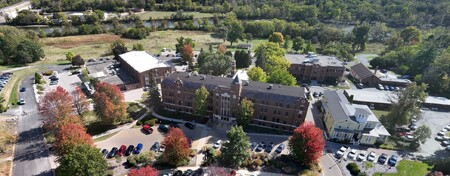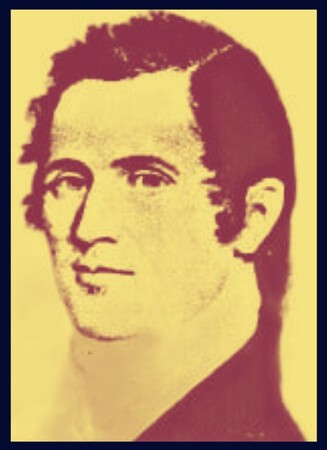
Happy Birthday Kane County - A Brief History
County Formation -
Eighteen years after Illinois was admitted into the union as its 21st state (1818), the Illinois legislature created Kane County on January 16, 1836, naming it after Elias Kent Kane, a prominent Illinois statesman. At statehood, only Native Americans resided in what is now Kane County. Settlers from the east began to arrive, displacing resident tribes to lands west of the Mississippi River, in what is now Iowa. In 1832, the Black Hawk War marked a final effort by Native Americans to reclaim their lands. Although no battles occurred in Kane County, U.S. troops passed through the region, following a path now referred to as Army Trail Road, fording the Fox River just north of modern-day St. Charles.
Initially, Kane County was part of LaSalle County, which also included present-day DeKalb County (created in 1837) and part of Kendall County (created in 1841).

Government Establishment -
In 1836, Geneva was chosen as the county seat due to its central location, and James Herrington's tavern served as the first courthouse. At the same time, elections were held to select the new county officials. In 1848, Kane County adopted a county-township form of government, creating sixteen townships. Each township’s supervisor was a member of the Board of Supervisors, which governed the county. This governance model evolved in 1972 when the Illinois legislature replaced the Board of Supervisors with a County Board, dividing the county into twenty-six districts.
Courthouses -
Kane County's first county-owned courthouse was completed in 1837 at a cost of $3,000. Over time, growing demands led to several relocations and new constructions in Geneva, culminating in an iconic limestone courthouse designed by John M. Van Osdel in 1854. After a fire destroyed the structure in 1890, the current four-story architectural landmark was completed in 1892. All county officers were housed there, and county business was conducted in the courthouse.
In September 1975, after the completion of the Kane County Government Center (see County Government Center below), the County Board authorized the Public Building Commission to refurbish the historic Third Street Courthouse. The project included converting vacant administrative offices into additional space for the Circuit Court and the Circuit Clerk.
By the 1980s, Kane County's rapid growth necessitated further expansion. The former Sixth Street School in Geneva was acquired to house the Family Court, while space was leased in the former Campana building at Illinois Route 31 and Fabyan Parkway to accommodate the Circuit Clerk's operations. The Circuit Clerk's office was later relocated to the former Montgomery Ward building on Randall Road in St. Charles.
Kane County's judicial infrastructure continued to expand with the opening of the Kane County Judicial Center in 1993 and the adult corrections center in 2008.
Kane County Government Center -
As the county grew, so did its administration. Following the remodeling of the Sacred Heart Seminary—purchased by Kane County in 1972—located where Third Street and Illinois Route 31 intersect in Geneva, all county administrative offices were relocated to the site in 1975. The property, now known as the Kane County Government Center, became the administrative hub for most county operations.
Current Government -
Kane County operations are governed by a 24-member County Board, with members elected to staggered terms every two years. The Board's Chair, elected countywide to a four-year term, presides over the county board, which establishes policies and oversees budgetary decisions.
In addition to the Board Chair, Kane County residents elect nine countywide officeholders to four-year terms. These positions include the Auditor, Circuit Clerk, County Clerk, Coroner, Recorder, Regional Superintendent of Education, Sheriff, State’s Attorney, and Treasurer.
Economy and Population Growth -
Following the Civil War, Kane County experienced rapid population growth as mills and factories along the Fox River attracted workers. Railroads, including the Galena and Chicago Union Railroad and the Chicago and Northwestern, further spurred development. Aurora became a major railroad hub, while the dairy industry flourished around Elgin in northern Kane County, supplying Chicagoans with fresh products. By 1940, the population had doubled to 130,000 and doubled again to 260,000 by 1970, driven by industrial growth and the establishment of institutions like Fermilab in 1967.
Modern Kane County -
Today, Kane County continues to balance growth and preservation. According to the 2020 U.S. Census, the county's population has exceeded 516,000, reflecting steady expansion driven by its proximity to the Chicagoland area. Efforts to protect open spaces, including farmland, while accommodating residential and commercial development remain at the forefront of county governance, shaping a future rooted in both progress and heritage.

